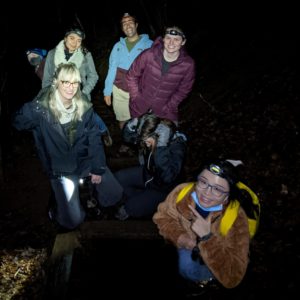It’s a very special season in Rochester! With the first few warm, rainy nights of the year comes an assortment of amphibians! Last week, several groups from the department went out to the nearby Mendon Ponds Park in search for salamanders and other pond pals. We specifically looked for vernal pools, bodies of water that form in the early spring due to snowmelt and evaporate away as the year goes on. These temporary ponds are perfect nurseries for many organisms, including frogs and salamanders, because predatory fish cannot access them.
Heading out around 9-11PM, each of the groups found a wide range of species! Including …
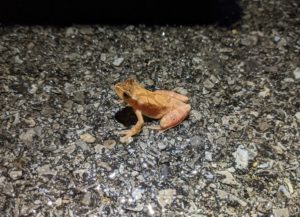
Spring Peepers (Pseudacris crucifer): These small frogs produce a lot of noise as their chorus of raspy chirps can be heard throughout the night.
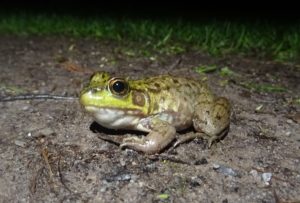
Northern Green Frog (Lithobates clamitans melanota): A common frog in ponds, if you think you hear someone plucking a banjo, it might just be a green frog!
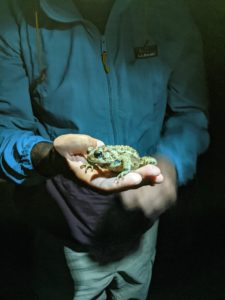
American Toad (Anaxyrus americanus): These toads are big and will further deter predators by secreting a bufotoxin, a poisonous substance that makes the toad unpalatable.
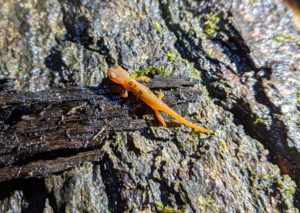
Eastern Newt (Notophthalmus viridescens): These can be found in a juvenile stage called an eft (shown here). Due to their color during this stage, they are often called “red efts”.
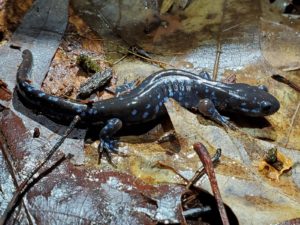
Jefferson Salamander (Ambystoma jeffersonianum): A medium sized mole salamander, these animals spend most of their time in burrows. They emerge this time of year to feed on worms in the rain and reproduce.
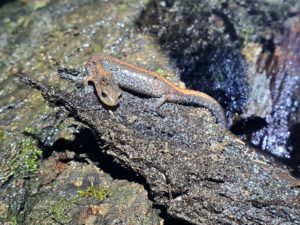
Red-backed Salamander (Plethodon cinereus): These small salamanders have a color polymorphism: some have red stripe (“red-backed”) while others have grey backs (“lead-backed”). The red striped individuals are also less likely to run away from predators, possibly relying on camouflage or aposematic coloration.
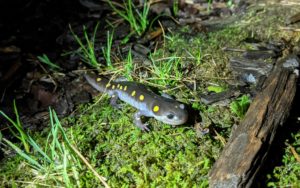
Yellow-Spotted Salamander (Ambystoma maculatum): The main goal of our trips, this large mole salamander is extremely hard to find outside of March-May. On only a few nights during this period, large masses of salamanders will move into vernal pools to breed all at once. Here’s hoping a later outing will catch this!
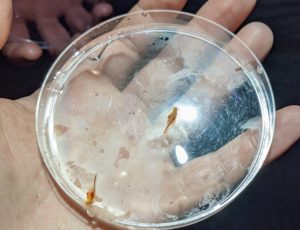
Fairy Shrimp (Eubranchipus vernalis): These are freshwater shrimp that only appear in vernal pools. They reproduce while the pool is full and their eggs remain dormant for the rest of the year until the pools form again in the spring.
Overall, these trips were a great way to familiarize ourselves with local wildlife and appreciate the biodiversity of vernal pools!


